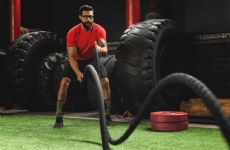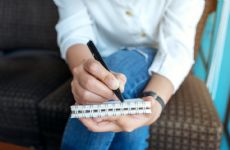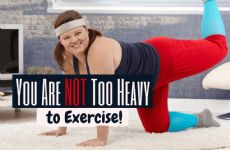|
Fact: Doctors love to eat. It is a truth that I learned early on in my medical training and one that has followed me through my career. To survive long shifts and a revolving door of patients, I quickly learned that a solid meal is key, but that doesn’t always mean we have time to sit down for a nice meal of quinoa and kale. For doctors, food is energy, plain and simple, and that means carbs, fats and proteins that can be procured and eaten quickly on breaks. As the treadmill of my life as a surgeon cranked up to full speed, I adopted these poor eating habits to cope with my increasingly hectic schedule. Sporadic eating throughout the day led to overeating at dinner, and bribing nurses with glazed croissants ended with indulging in one or two sweet treats myself. I gave little thought to nutritional value or savoring the taste of what I was eating and thus, as my practice grew, so did my waistline. Suddenly, 20 years had passed since my days as an eager intern, and my weight was up--along with my cholesterol, triglycerides and blood sugar. Who knew I couldn’t just tell my patients how to be healthy without following the same advice myself? But then I realized something great: It was not too late to make a change. I could save my patients and myself at the same time. Yes, there is a donut shop on the first floor of the hospital, but I don’t have to frequent it. While there are bays of elevators taking me up to the 8th floor to see patients, I don't have to use them. In the end, it is about finding the right balance. The secret to healthy living is not a fad diet or some short term sacrifices; It is about making good choices, most of the time. I am not perfect, but my weight is down, my blood sugar levels are normal and my cholesterol is under control. I don’t count calories, but I do exercise five days a week, alternating cardio and weight training. My Healthy Eating Routine Breakfast I normally begin the day with a glass of water and then a couple cups of coffee with just a tablespoon of cream. I arrive at the hospital by 6:30 a.m., see my patients and then hit the cafeteria. A typical breakfast for me includes two hard-boiled eggs with a little butter, fresh fruit and water or green tea. The protein, fiber and fat see me through my first surgery of the day. Later, when time allows, I grab a mid-morning snack of two graham crackers with some natural peanut butter to keep me going in case surgery runs long and lunch gets delayed. Lunch When it’s time for lunch, I head back to the cafeteria for the salad bar. My salad includes fresh greens, grape tomatoes, red bell pepper and some lean protein (either chicken, tuna or chick peas) topped with a little oil, balsamic vinegar and sunflower seeds. Again, water is my drink of choice during the day. I discovered that even though diet soft drinks have zero calories, the sweetness left me craving more sweets. As a result, I now opt for water or fruit-infused water. Dinner Most of my weeknight dinners are at home, where my family follows a Mediterranean diet. We usually have fish, chicken, nuts, olive oil, fruits and vegetables and a glass of red wine. Our love of food means we are often creating and recreating recipes to make them more healthful, but just as delicious. It was this idea that sparked the creation of our website, eatandbefit.com. All too often my patients—much like my former self—rely on the same unhealthy comfort foods time and again. The goal of Eat and Be Fit is to help other individuals find healthy new recipe options that are still comforting and satisfying, while keeping them on track at the same time. So, as you can see, doctors really aren’t any different than anyone else. We encounter the same obstacles, both at work and at home, but we can all seek out information that can help us learn about and adapt to healthy living. This doctor might have had to learn the hard way, but he did learn, and so can you. .jpg) Dr. Thomas J. Kleeman, MD, is nationally-renowned orthopedic surgeon and founder of the New Hampshire Neurospine Institute. With the help of his wife Anne, he has become dedicated to the use of exercise and good nutrition as a means of maintaining quality of life during the aging process. Now 66, he is a cancer survivor who found the benefits Dr. Thomas J. Kleeman, MD, is nationally-renowned orthopedic surgeon and founder of the New Hampshire Neurospine Institute. With the help of his wife Anne, he has become dedicated to the use of exercise and good nutrition as a means of maintaining quality of life during the aging process. Now 66, he is a cancer survivor who found the benefits |
Popular EntriesMore From SparkPeople
|

.jpg)
















.jpg)


